Media | Articles
Trackhouse Racing honcho Justin Marks is NASCAR’s most disruptive team owner
“The big thing is our haulers,” says NASCAR team owner Justin Marks.
Before the start of Trackhouse Racing’s sophomore season—and first campaign as a two-car effort—Marks dropped massive cash to wrap a pair of Peterbilts in matte black and blue chrome vinyl. Haulers, typically, don’t get this kind of attention as part of race prep.
“I blew out the budget on the haulers and caught some people off-guard,” says Marks. “We rolled into Daytona, though, and everyone was talking about how good they looked.”
Not even a full race in, the young team was already turning heads. It’s a calculated piece of Trackhouse’s strategy.
“Traditionally, teams don’t pay attention to those things, because they’ve been so focused on what it takes to make the race cars go fast, but we are fundamentally a marketing company,” explains Marks.
Marketplace
Buy and sell classics with confidence
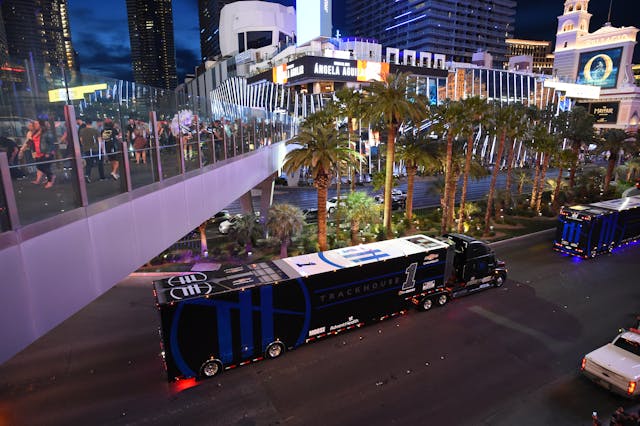
This attention-to-detail mindset has propelled what started as a small start-up team into a multi-car, championship-contenting juggernaut. Less than two years ago, Trackhouse had never seen a Cup series race. Now, with three Sundays left in the 2022 season, it’s in the thick of the championship hunt.
How did this transformation happen? How did Marks, now 41, become one of NASCAR’s most popular owners seemingly overnight? To answer these questions and more, we got in touch with the hyperactive team owner for an in-depth breakdown.

Born in St. Louis, Marks grew up watching dirt racing in Iowa with his grandfather. Tracks like Knoxville and 34 Raceway set the hook. The young fan’s time in the Midwest was short-lived, however; his father, Michael, was one of the first to shuffle the family out to San Jose ahead of Silicon Valley’s tech revolution. In California, the family gained firm financial footing which allowed Justin to pursue his interest in road racing.
A 1969 Datsun 510 served as his first set of wheels on track, competing in SCCA’s San Francisco region. Not long after, Marks went pro racing thanks to a sponsorship from his father’s electronics company. It was a large jump by any measure: The rookie racer, with less than 20 green flags under his belt, proved a serviceable teammate to ace drivers like Boris Said in road racing’s pro ranks. In the mid-2000s, Marks made his stock car debut in the ARCA series.
In the following years, Marks bounced between disciplines, series, and sanctioning bodies before teaming up with Chip Ganassi as a part-time driver in NASCAR’s Xfinity Series. He earned his sole win at a rain-soaked Mid Ohio in 2016.
While racing, Marks had other irons in the fire—one being a role in the nation’s premier go-kart rental facilities, GoPro Motorplex in North Carolina. “I’ve always been interested in business,” says Marks, whose team consistently plays counterpoint to seasoned teams rooted in conventional thinking. “I grew up in Silicon Valley and had a front-row seat to new disruptive business and [it] was always something that fascinated me.”
In 2019, Marks made a decision that would send his world into a blender.
“I’ve always wanted to be successful at the highest levels of NASCAR. And I wasn’t going to do it as a driver,” says Marks. “But the barrier of entry from the Cup Series was so high, so I had never really considered going Cup racing. Then, I started hearing about the new car.”
Propelled by the insider insight that NASCAR was on the precipice of introducing its radically new Next Gen stocker, Marks announced that he would enter the Cup Series as a team owner. “The new car represented an opportunity to be successful with things that I thought I was good at things that I could do.” This included bringing new partners into the fold and quickly adapting to the radically-new racer. Marks had spent years in and around IMSA cars, suppliers, and partners. NASCAR’s novel machine, which borrowed heavily from its road-racing, France-owned counterpart, was familiar territory for Marks.
Marks leased a charter from a fellow team for the 2021 season, which guaranteed a starting position in each race and brought in Ty Norris as partner. No stranger to launching new teams, Norris helped stand up Dale Earnhardt’s race team in the late-1990s. Now, the industry veteran would help Marks build the foundation of their fledgling team. Trackhouse Racing was born.
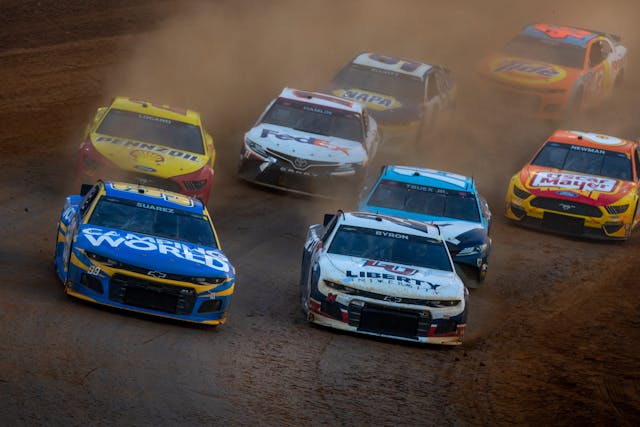
The 2021 season was very much a building period, as the new car was still a year out. Trackhouse’s sole driver, Mexican-born Daniel Suárez, did well on occasion but never found victory lane. Looking for a solution beyond the one-year charter lease, Marks called old employer Chip Ganassi in hopes that he might sell his two-car team. Rather than purchase an additional charter for millions of dollars, Marks sealed the deal with Ganassi in the fall of 2021. “He made me a great offer that required my attention,” said Ganassi during the press conference that announced the big sale. Trackhouse headquarters remained in Nashville, while Ganassi’s old 140,000-square-foot building became the team’s new race shop.

Marks wasn’t done making waves. As if the acquisition of one of NASCAR’s longest-tenured owners wasn’t enough, he brought Latin pop artist Pitbull into the fray as co-owner. For their driver lineup, they retained Daniel Suárez and added Ganassi driver Ross Chastain, an eighth-generation watermelon farmer known for his scrappy attitude—and for smashing watermelons from the roof of his car during victory celebrations.

Behind the scenes, the new Cup team owner faced the herculean task of marrying separate shops and two sets of employees under one common goal. “I approached this new car with a complete clean slate,” says Marks. “I didn’t want anybody working for this company that didn’t like the new car or think it was really cool.” Any employees who didn’t embrace the change were kindly asked to leave.
The end result was a group of people that he says “approach the car like solving a puzzle, with an open mind, enthusiasm, and positivity.” He adds: “With this car, I feel like that translates to speed.”
So far, it has.
Earlier this year, Suárez, a 30-year-old driver from Monterrey, claimed his first Cup victory in his 195th start, becoming the first Mexican-born driver to win in the series. Melon man Ross Chastain is a multiple-time winner this year and a serious threat for the title.
Beyond the actual spinning of the wrenches, Marks continues to develop Trackhouse as a brand that has roots in racing but reaches far beyond the discipline. Building the firm into an entertainment brand ranks high on the new owner’s list. Earlier this year, Trackhouse signed pro golfer James Hahn. The team also brought Formula 1 star Kimi Räikkönen to the United States to race in the team’s Project 91—a program devoted to placing drivers, on a part-time basis, from other series in NASCAR Cup car.

As for Marks, he still trades his owner hat for a helmet from time to time. Most recently, he strapped into a NASCAR truck to race at the site of his prior NASCAR triumph, Mid Ohio. True to Trackhouse form, the cameras were there, along with the spotlight. All anyone could talk about during the truck series’ inaugural visit to the road course was Marks’ one-off race.
This cocktail of creativity—athletes, apparel, and everything else—has morphed Trackhouse into a legitimate force. Each person at the company, according to Marks, is all in. “I’m standing in the shop right now, looking at 60 people on the floor working, and every single one of them contributed to how we’re doing things,” he says.
Trackhouse is a team effort, one that’s making waves beyond just NASCAR. If the sensational haulers are any indication, no detail is too small—or too big.
Check out the Hagerty Media homepage so you don’t miss a single story, or better yet, bookmark it.

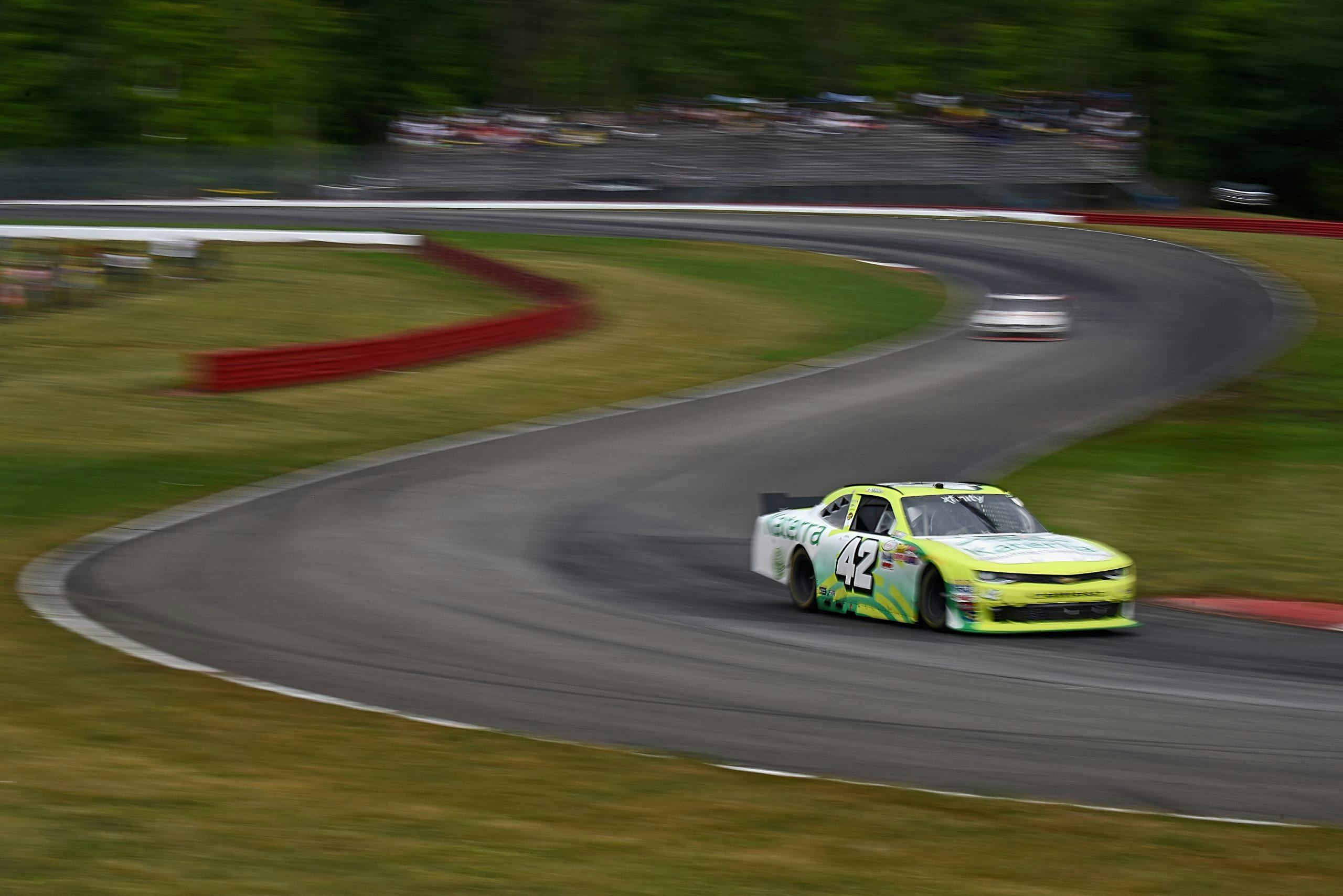

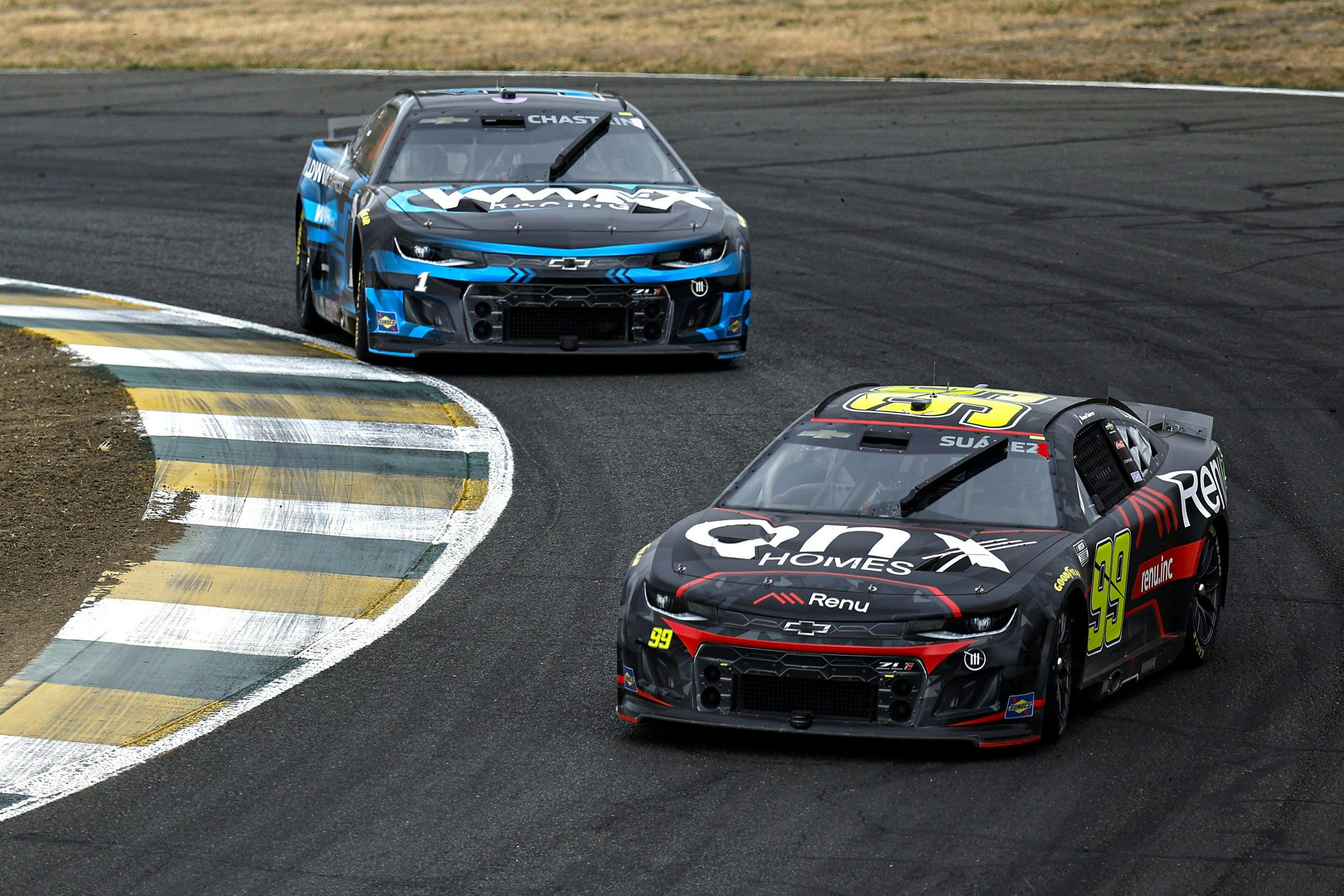

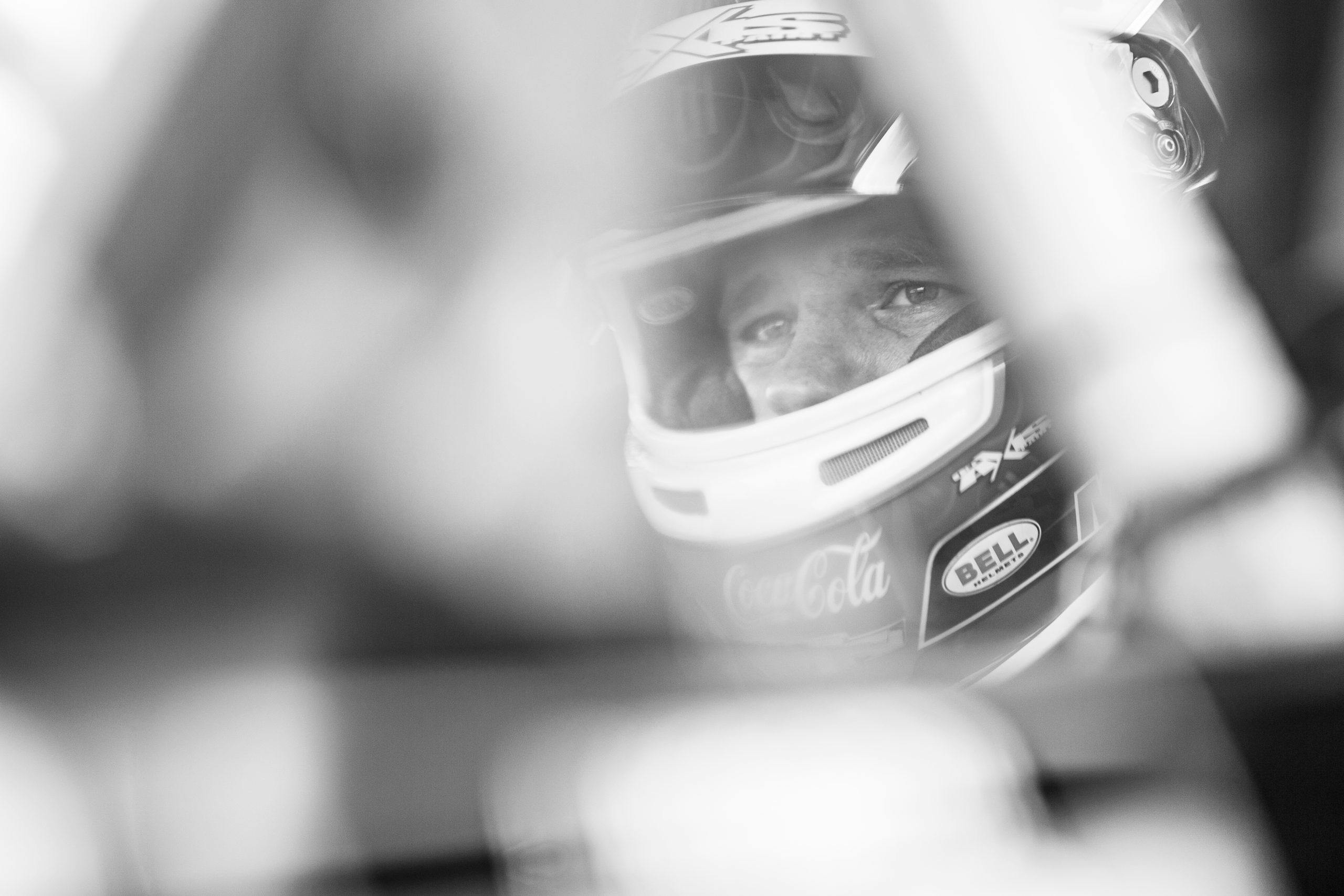



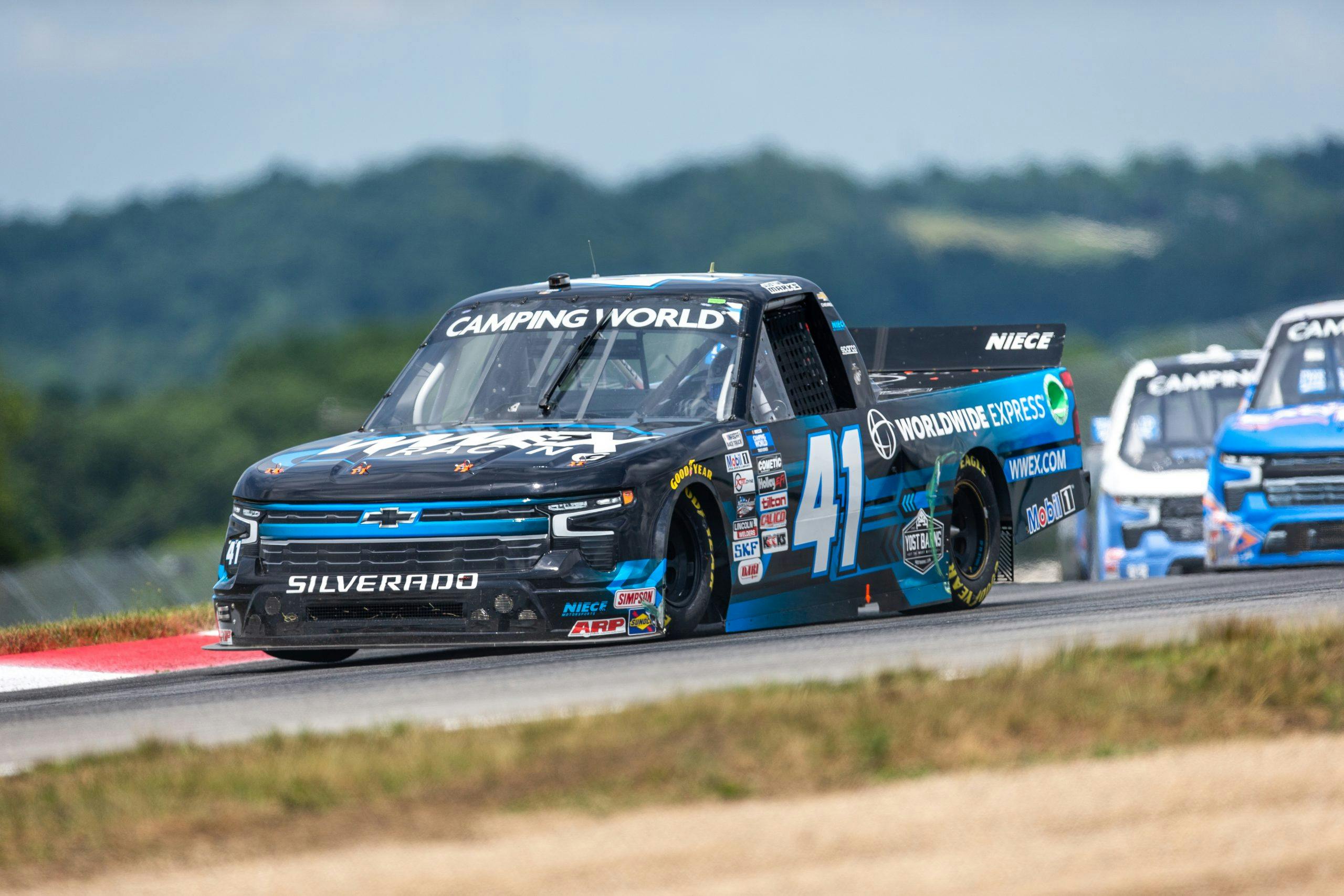











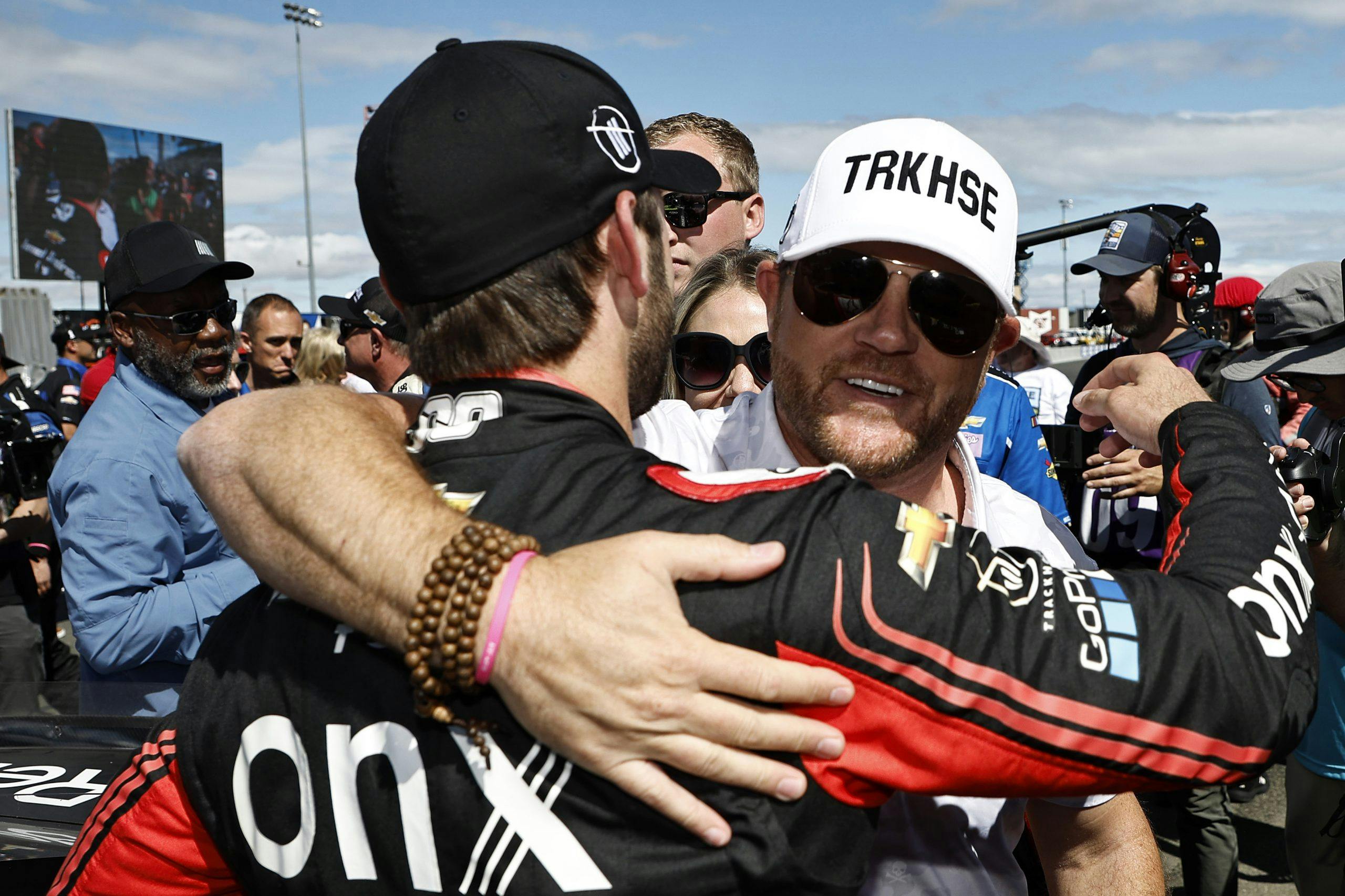
I recall his drive in that 2016 race – very well done, with obvious talent. Trackhouse is not exactly a rags-to-riches story, but probably as close as it gets to one in today’s top-tier racing. It’s nice to see a small team with the fortitude and enthusiasm to run near the front so quickly.